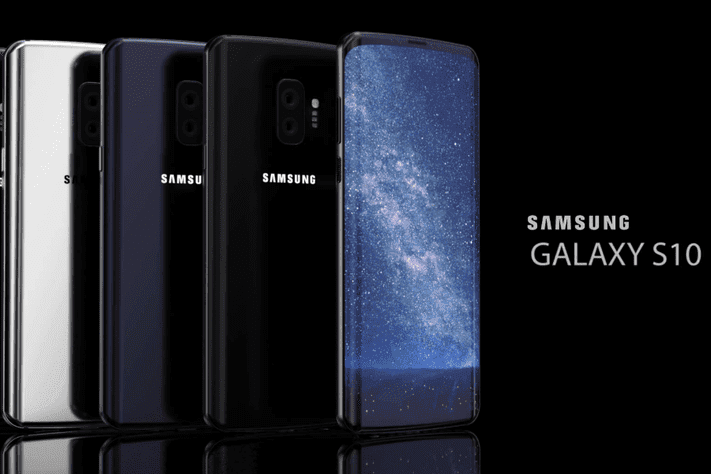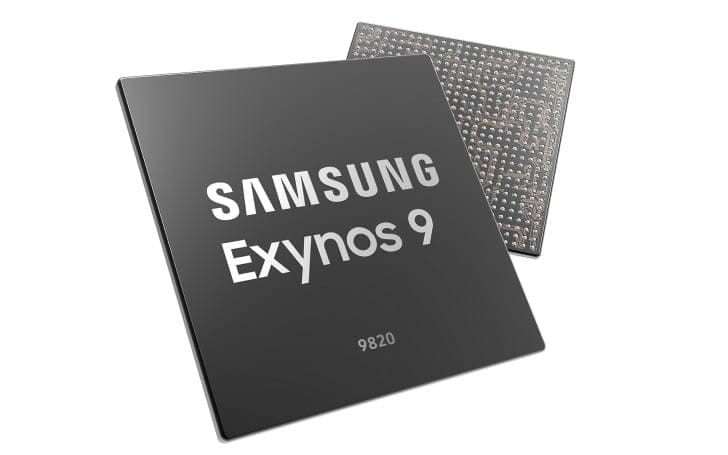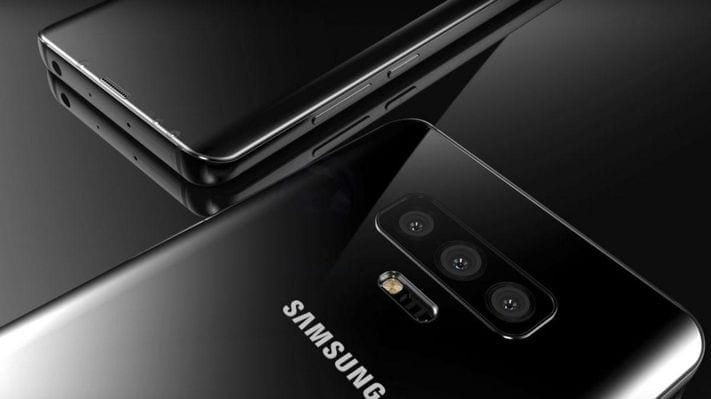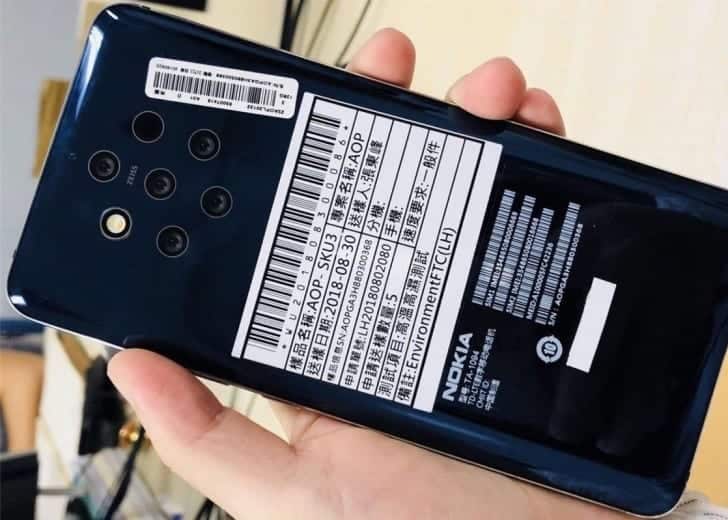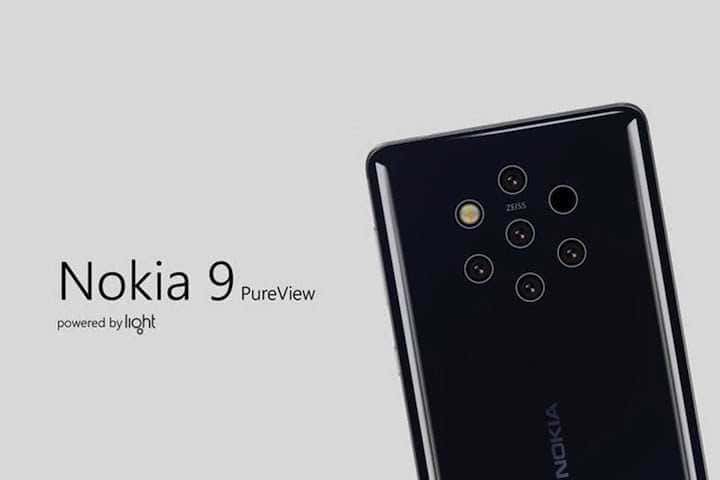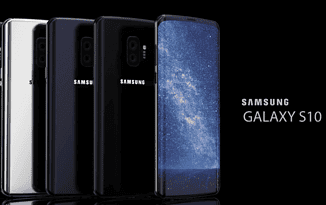
The Galaxy-S series arguably houses some of the best smartphones ever made by the South Korean giant. The Samsung Galaxy S9 is the latest member/entrant of the series and as we edge closer towards 2019, and given Samsung’s tradition of releasing a new Galaxy S smartphone annually, it’s almost time for the unveiling of the Samsung Galaxy S9 successor.
Customarily, Samsung unveils a new Galaxy S flagship in the first quarter (Q1) of every year. It’s barely 2 months to that period, meaning the Samsung Galaxy S10 is coming soon. And as it is with any Samsung flagship, there are always speculations, rumours, leaks, renders, and other pre-launch information. We compile some of the highlight rumours and confirmed Samsung Galaxy S10 news under the header below.
Samsung Galaxy S10 Expected Features Notched DisplayFor the first time ever, a Samsung-branded smartphone will be coming with a notch… and the upcoming Galaxy S10 could be the first from the South Korean giant to sport a display cut-out.
Weeks ago, at its 2018 Developers Conference, the company announced the different possible form that notches would take on its flagships in 2019. Now, reports have it that the Samsung Galaxy S10 will come with an Infinity-O notch — an fully circular O-shaped cut-out at the top-left corner of the display. As announced by a Samsung official at the event, the notches are “around the corner”, affirming that the Galaxy S10 will truly come with a notch.
Exynos 9820 ChipsetSamsung equally announced the latest iteration of its Exynos chipset. Although it was only officially announced, Samsung says the Exynos 9820 will power its 2019 flagships and go into mass production before the end of the year and is definitely going to be ready for use on the Galaxy S10.
The Exynos 9820 is fabricated on the 8nm LPP FinFET technology and, compared to the Exynos 9810, bring on improvements in the aspects of performance, processes, power saving, upload, and download speeds, as well as artificial intelligence, thanks to its new dedicated neural processing unit (NPU).
Ultrasonic in-display fingerprint sensorA good number of smartphones that launched this year with their fingerprint readers beneath their display used optical sensors. Samsung, however, will be using ultrasonic in-display fingerprint sensors on the S10 which will be supplied by three companies: Qualcomm, General Interface Solutions (GIS) and O-Film.
The Galaxy S10 will be the first Samsung phone with an in-display fingerprint sensor and the use of ultrasonic over optical sensors means the functionality of the sensor will be resistant to external force like lightning conditions and a couple of other factors. In fact, there is a probability that the whole screen of the upcoming Galaxy S10 would be able to read fingerprints.
Triple Rear-cameraFollowing in the footsteps of the Galaxy A7 (2018), Samsung will also embed three optical sensors on the rear of Galaxy S10. And while there are no official words on the number or quality of camera to be used on the device, there have been reports that Samsung will use the same 12-megapixels primary sensor as the Galaxy S9. It will also come with variable (f1.5/f2.4) apertures. Supporting the primary camera will be a secondary 16-megapixels super wide-angle lens and a tertiary 13-megapixels telephoto lens.
Colour optionsThe Samsung Galaxy S10 is the 10th year anniversary of the Galaxy S flagship series. As such, Samsung is trying all it can to make it the sleekiest Samsung smartphone ever. It is in this light that Samsung will be releasing at least nine colour variants of the Galaxy S9 in new gradient color schemes, as confirmed by Forbes.
VariantsUsually, Galaxy S devices are unveiled in twos — a regular model and an advanced Plus (formerly Edge) variant. Perhaps because the Galaxy S10 is celebratory/anniversary device (like the Apple iPhone X), it will be coming in four different variants.
Reportedly, Samsung will be giving Galaxy S users an optional break from curved edges as the base Galaxy S10 will come with flat sides and edges. There will also be a model with curved edges and dual rear camera, another one with triple rear camera, and lastly, a top-tier variant with all the best features plus support for 5G connectivity.
Release date and AvailabilityAccording to Samsung, the Galaxy S10 will be launched in 2019 and should be unveiled before it commences mass production of its Galaxy F foldable phone by March. That leaves the expectancy period of the Samsung Galaxy S10 between January 2019 – March 2019 (i.e Q1 2019).
For more Samsung Galaxy S10 news, updates, and information visit and subscribe to our news portal (news.naijatechguide.com).
The post Samsung Galaxy S10: What we know so far appeared first on Nigeria Technology Guide.

The Nokia 9 has been in the news for a lot of reasons lately: image leaks, speculations, renders, release date news etc. The device is expected to succeed the Nokia 8 which was released over a year ago. But as the rumours keep rising, so are the questions about the upcoming Nokia flagship.
What will the Nokia 9 look like? What will it be called? Nokia 9? Or will HMD Global give it an entirely new (and different) name? What will be the key features? When will it be launched? So many questions. Lucky for you, the headers and paragraphs below would answer all the Nokia 9 questions you might have and more.
Nokia 9: Expected SpecificationsThese specs are a compilation of all the rumours and leaks that have surfaced over the past month put into a list. These are not the official/confirmed specifications of the Nokia 9.
Dimension: 155 x 75 x 7.9 mm (6.10 x 2.95 x 0.31 in) Display: 5.9-inch AMOLED FHD+ (1440 x 2960 pixels) Always-on display with Corning Gorilla Glass CPU: 2.8GHz Octa-core Qualcomm Snapdragon 845 SoC GPU: Qualcomm Adreno 630 Operating System: Android 9 Pie RAM: 8GB Rear camera: Five (5) unspecified cameras Front-facing Camera: Single 12MP selfie camera Storage: 128GB, up to 512GB via hybrid SD card slot Battery: Non-removable 4,150mAh Lithium-Polymer battery Others: IP68 dust/waterproof rating, under-display fingerprint sensor, USB-C Five Rear-facing CamerasYes, the Nokia 9 will be launching a with not one, two, three, or four but FIVE cameras on the rear. Although this hasn’t been officially confirmed to be true, this is one of the earliest information to be revealed about the Nokia 9 via image leaks. What seems to be factory prototypes of the upcoming Nokia 9 leaked months ago, showing five cameras and LED flash arranged in an circular arrangement akin to that of a handgun revolving cylinder.
There are, however, no information regarding the megapixels rating or the lens type of each individual sensors at the moment but we know that all the five cameras will be manufactured by ZEISS as HMD recently revived its partnership with the Germany-based optical company. If everything checks out, in the end, the Nokia 9 will be the first smartphone to sport five cameras on the rear — given no other company beats HMD Global to it just like Royole beat Samsung and Huawei to the first foldable smartphone.
Name and CodenameStill on partnership and business, HMD Global have also reacquired the PureView camera trademark and brand from Microsoft and, from the look of things, will most likely attach the PureView trademark to the official name of the Nokia 9. Hence, the name of the upcoming HMD Global flagship is speculated to be the Nokia 9 PureView.
Also, because the device is said to be codenamed “Olympic” because, obviously, the Olympic logo has 5 rings and the Nokia 9 will come with five cameras. So, Nokia 9 PureView is the name while Olympic is the codename.
Android 9 PieEvwe since the Android 9 Pie was unveiled, HMD Global was one of the was first smartphone company to adopt the OS and send OTA updates to its users. This time, with the upcoming Nokia 9 PureView, users will have a taste of Google’s Pie out-of-the-box. The Nokia 9 will also join the few OEMs (like Huawei) that have devices that run the OS from the box.
Notched DisplayLike the Nokia 6.1 Plus and newly released Nokia 7.1, the upcoming Nokia 9 PureView I expected to sport a rectangular cutout at the top of the display. The cutout information isn’t solid yet but several renders have pointed hinted its possibility on the device.
In-display Fingerprint SensorGoing by the renders and prototypes of the Nokia 9 that have surfaced so far, one thing has been in unison: lack of an on-body fingerprint sensor. This signals the possibility of HMD Global fitting the device’s fingerprint sensor underneath its display. The device will be the first from the OEM to sport this feature.
BatteryReports have it that the device will be equipped with a 4,150mAh Lithium-Polymer non-removable battery. This will make the Nokia 9 PureView battery capacity the largest ever from Nokia.
Release dateThe release date of the Nokia 9 has been one of the most unstable and obscure piece of information about the device. Reports on the official release date of the device have gone back and forth between this year and Q1 2019. However, despite reports of postponement of launch date to 2019, new details suggest that HMD Global might be making a U-turn.
#ExpectMore pic.twitter.com/Z4F9F0xcZK
— Juho Sarvikas (@sarvikas) November 15, 2018
The Finnish company has scheduled an event for December 5 in Dubai where it will be unveiling there new phones to end the year. It is believed that one of the devices will (most likely) be the Nokia 9 while the other two, Nokia 2.1 Plus and Nokia 8.1 — new model to the Nokia 2.1 and Nokia 8 respectively.
The post Nokia 9: What we know so far appeared first on Nigeria Technology Guide.
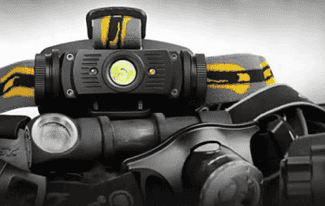
Technological progress has a tendency to creep up on people and because of this, the technology phenomenon as a whole has what could be defined as a PR problem.
The usual flow is broadly the following: a scientific theory is formulated, then experimentally proven while the scientific community probes and reviews the paper, the results, and the methodology involved.
If all is well and rock solid, at this point the press and media will pick up the story and claim that a new technological breakthrough has been made and this one will change our lives forever.
Then…complete silence for a few years while the discovery slowly fades away from the public memory and new ones take the spotlight.
At this point it might seem that the idea is discarded and heading towards a sort of scientific graveyard, but in reality the opposite is generally true.
In itself, a theoretical concept that has been experimentally proven in a controlled environment doesn’t have much practical use but give engineers and product designers a few years and these unsung heroes will have consumers use the tangible results of the scientific theory without even realizing it.
This process however takes time, effort, brilliant ideas and imagination. Most of the times it also requires several other scientific discoveries to be put together to allow the creation of a final product.
Why Am I Here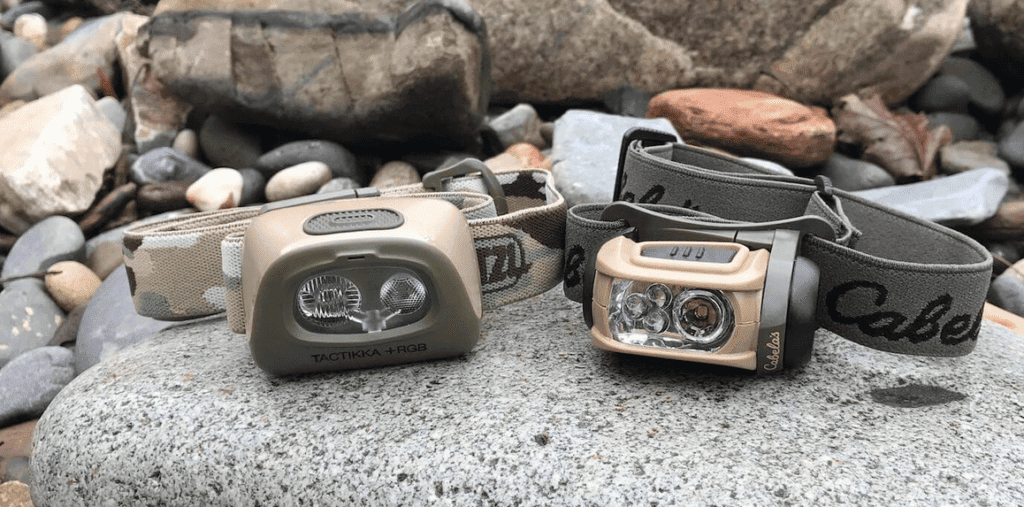
I will give you a specific example, which is what actually prompted me to ponder on this topic and the subsequent writing of this article: about a week ago I was looking to buy a headlamp to take with me in my hunting trips.
Since I cannot just get the first one I lay my eyes on, I needed to do some research and at this point I realized that I actually didn’t know that much about these headlamps. What are their main features? What should I be looking for and what is a deal breaker?
So, I did what any normal person would and searched for “best headlamp for hunting” and started from there. After a few hours, I had made my choice but in the process I came to realize just how many crucial technologies and scientific discoveries went into creating a what is now a rather mundane product that most of us are using without ever looking “under the hood”.
Technology Behind the HeadlampFirst you have the obvious LEDs, which, on most headlamps, emit a white light. LEDs work based on a scientific phenomenon called “electroluminescence” which was discovered in 1907. However, the first LEDs were actually invented in the ’60s, producing only red light and costing about 200$ each.
In ten years time, thanks to new technological discoveries and improved production methods, the price dropped to a few cents and the size to a few mm. In the 70s green LEDs were also invented, while further improvements to brightness would be made as well.
Last piece of the puzzle, the blue LEDs, came in the ’90s which finally allowed for white LED light to be formed. All in all, it took about 100 years from the discovery of the principle to designing a component that is part of products in nearly all households in the world.
Due to the long timespan and arduous development process, most people are completely oblivious of how much it took to go from a dry scientific theory to a component that is so small and cheap and efficient that it can be used on everyday products such as headlamps.
But the lights are only the tip of the iceberg: on most hunting headlamps these are powered by Li-ion batteries, another technological marvel which forever changed our lives.
However, batteries themselves are by no means a new or modern concept, considering the first were invented in the 19th century, in the form of voltaic piles and the theoretical science behind them is basically an accumulation (pun intended) of multiple principles and scientific laws revolving around electricity and electromagnetism.
First Li-ion batteries were designed in the ’70s and were the size of a car battery, making them rather uncomfortable to carry around as power source for a headlamp.
But continuous development, parallel advancements in materials technology and miniaturization and multiple iterations resulted in a small, lightweight and cheap rechargeable power supply that can be used in mundane objects, without most of us ever noticing.
Lastly, tying everything together is the nowadays demonized plastic. I won’t be discussing how bad we are at managing the waste resulting from this component but rather take a brief look at its history: the first artificial, man-made, plastic was developed in mid 19th century but it wasn’t until 1960s that it saw truly widespread use and popularity.
Nowadays we could hardly imagine our lives without plastic, to such an extent that we’re currently facing some huge environmental issues due to its almost inconceivable prevalence.
However, even in this case, the road was long and took many long years before the adjacent technologies and discoveries were in place as well as achievening the necessary production efficiency.
By this point you’ve surely noticed the pattern so I won’t further detail each component or feature such as USB charging and standardization or special paints and their technological history.
My simple search for the “best headlamp for hunting” has taken me on a bit of a scientific trip and eventually lead to the conclusion that we should come to terms with the fact that most times it takes a few good years between a new revolutionary idea or discovery and eventually its implementation as a practical product that is used en masse.
Luckily we’ve been doing this for quite a while so there’s a sizable “backlog” of incredible discoveries which are reborn every day in their tangible form and this process has been accelerating thanks to things such as standardization, improved practices or a little thing known as the digital revolution.
Related Topics How to Buy an Air Conditioner How to Buy Inverter How to Buy a Refrigerator How to Buy a Generator Buying a Smartphone How to Buy TVThe post The Technology Behind a Headlamp appeared first on Nigeria Technology Guide.
